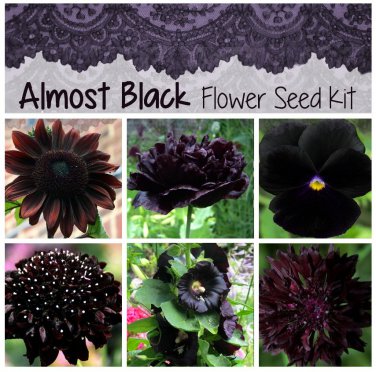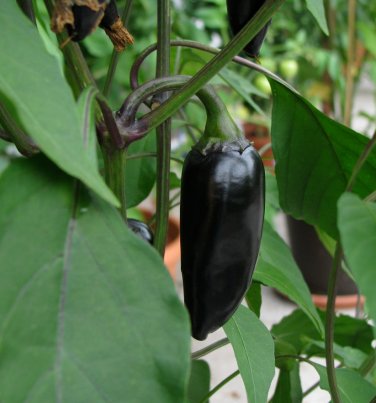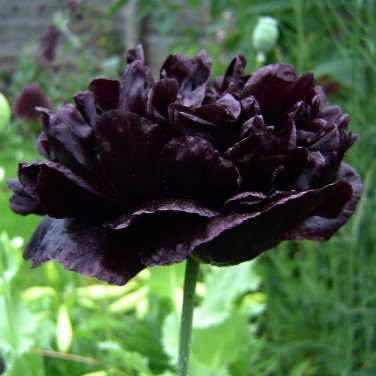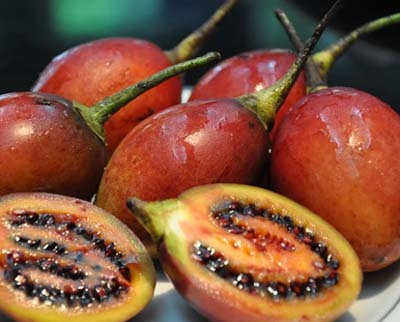Saturday
Abrus precatorius Rosary Pea
The Rosary pea is a small, high climbing vine with alternately compound leaves, 2-5 inches long, with 5 to 15 pairs of oblong leaflets. The flowers are pale violet to pink, clustered in leaf axils. The pod is oblong, flat and truncate shaped, roughly 1½ - 2 inches long. This seedpod curls back when it opens, revealing the seeds. The striking seeds are small, brilliant red with a black spot and are used for jewelry and in percussion instruments.
Propagation: This plant species is propagated through seeds and very easy to grow.
Zone: 9 (10 to 20°F, down to about -6°C)
Note: The seeds are toxic if digested and care should be used when drilling.
US Seeds Source:
Posted by
Garden Medusa
0
comments
![]()
Labels: 'John Crow' Bead, Abrus precatorius, Crab's Eye, Hung Tou, Jequirity, poison plant, Precatory bean, Rosary Pea
Tuesday
Geissorhiza radians South African Wine Cup
Posted by
Garden Medusa
3
comments
![]()
The Thailand Parrot Flower
Impatiens psittacina Hook.f.
The Thailand Parrot Flower
Dork Nok Khaew
Flower Bird Parrot
These delicate parrot flowers simply hang there. Whichever angle you look at them from you’d still see pink parrots. They’re a rare phenomenon.
 A balsam, Impatiens psittacina is a very rare impatiens species first discovered in 1899 by British officer A.H. Hildebrand in Shan States of upper Burma and identified to the botanical world in 1901 by botanist E.D. Hooker.
A balsam, Impatiens psittacina is a very rare impatiens species first discovered in 1899 by British officer A.H. Hildebrand in Shan States of upper Burma and identified to the botanical world in 1901 by botanist E.D. Hooker. Hooker originally stumbled upon the plant in India and brought back the seed to the Royal Botanic Garden Kew in London. Those seeds did not reproduce after the first year.

The parrot flower is one of nature's most beautiful creations. A rare plant and a protected species. The Thai government has elected to ban the export of seeds or plants because they are extremely rare. Punishment is severe for those who break this law.
Note: I have been seeing some questionable sellers from China offering these seeds. I am not sure what type if seeds they are selling (probably carrots), but they are definitely not Parrot Flower seeds!!
It angers me that fraud china sellers are duping people into buying rainbow roses, black rose and some other non existing junk. Don't get duped! Do your research!
Posted by
Garden Medusa
3
comments
![]()
Labels: exotic seeds, Flower Bird Parrot, Impatiens psittacina Hook.f, rare flowers, rare seeds, The Thailand Parrot Flower
Friday
Bejuco De Santiago Aristolochia
The Aristolochia trilobata has both beautiful glossy leaves and incredibly weird flowers. According to the gardener, like a Strophanthus, it has long streamers from the flowers that can get over a foot long. Its Nepenthes like blooms distinguish it from other Aristolochias such as elegans, gigantea, brasiliensis and ringens.
Temporarily situated in my office window I am exited to see this one bloom, which should be next year :)
Posted by
Garden Medusa
0
comments
![]()
Labels: aristolochia, aristolochia trilobata, bejuco de santiago, duchman's pipe, dutchman pipe
Wednesday
Tropical Dogwood Virgin Tree

Winter hardy to USDA Zones 9-11. Can be grown in containers that must be overwintered indoors. Use a well-draining potting mix and keep soils consistently moist. Grow in full sun to part shade. Best color in full sun, but plants also appreciate some mid-day filtered sun in hot climates. Bring containers indoors in fall when night temperatures start dropping into the 50s. Overwinter in a greenhouse or a warm sun room. Cuttings may be taken in late summer for overwintering.
Posted by
Garden Medusa
3
comments
![]()
Labels: Mussaenda erythrophylla, Mussaenda philippica ‘Aurorae’, Tropical Dogwood, Virgin Tree, white Mussaenda
Monday
Stictocardia beraviensis Hawaiian Sunset
 What a stunning vine! Off and shopping I go. Will update shortly with info about this gorgeous super rare collector vine....
What a stunning vine! Off and shopping I go. Will update shortly with info about this gorgeous super rare collector vine....Update. Got seeds! I had to choose between 1 French, 1 German, 2 African and 2 American suppliers, that's it. Ended up buying home based.
This evergreen climber with absolutely gorgeous blooms and lush big leaves is grown all over the Tropics and some subtropical areas. It is related to the Morning Glory with fast growing thick stems and fleshy heart shaped leaves. Cup shaped flowers emerge at the leaf axils in clusters and are 2-3"across, bright crimson with yellow and orange streaking. They are scented and seem to last a day or two. Leaves are large, growing in shade up to 10-12" wide, dark green and velvet, very ornamental even when not in bloom.
The plant likes lots of water, especially if grown in full sun. As with any blooming plants, the rule is - the more sun, the more flowers. However, this plant can be planted in shade probably with advantage: it will still continue blooming profusely, but the leaves will grow much larger, that will create a gorgeous tropical look.
If planted in ground, this plant requires significant space due to its fast growing habit. However, it can be easily grown in container as well. You may trim any unwanted twigs which won't hurt the plants appearance and will encourage new blooms in leaf axils. .......
Edit. US Source: Seeds yay!
Posted by
Garden Medusa
7
comments
![]()
Labels: hawaiian sunset bell, hawaiian sunset vine, Ipomoea beraviensis, Stictocardia beraviensis
Friday
Oh Pumpkin Tree, Oh Pumpkin Tree....
A most unusual and rare plant in the Eggplant family. It is usually grown through out mountainous areas of Asia.
This pumpkin is edible but like many eggplants, it has a somewhat bitter taste that is common in some Asian dishes.
Incredible showy ornamental garden plant with pretty purple to white flowers, deep purple stems and branches, and very large, peculiar shaped leaves. A beautiful plant to show off to your neighbors or to try out in a hot, spicy Thai recipe. The hot Thai spices blend well with this type of eggplant.
Synonyms: Solanum integrifolium is sometimes listed as Solanun aethiopicum.
Flower: Flowers are purple/white and 3/4 in. wide.
Fruit: Fruit are red or yellow, globose, 1-2 in wide, ribbed.
Uses: Use dried fruit in arrangements or for decorations. Dried fruits resemble small, flatten, globose, orange mini pumpkins.
Culture: Grow in full sun in average, well-drained soil.
 Stunning flower bed specimen that dries nicely and the branches with fruits make stunning additions to any flower arrangements.
Stunning flower bed specimen that dries nicely and the branches with fruits make stunning additions to any flower arrangements.
Posted by
Garden Medusa
0
comments
![]()
Labels: hmong eggplant, Pumpkin Tree, pumpkin-on-a-stick, Solanum integrifolium
Tuesday
The Phenomena of Goth Gardening
The Goth Garden.
I see many people asking about about Goth or EMO gardening all over the web and I never knew what it meant, thought it was depressing nonsense.

Black flowers? That seems strange to me, because how would a bee or a butterfly be attracted enough wanting to pollinate.
 I am beginning to think that it's probably not any less strange than my desire to find the diamond in the rough, the best of the best, the most unusual, the most challenging and eventually the ultimate (?).
I am beginning to think that it's probably not any less strange than my desire to find the diamond in the rough, the best of the best, the most unusual, the most challenging and eventually the ultimate (?). There must be some happiness in black flower gardening. .....I am still researching this phenomena.
In the meantime, here are some very beautiful and dramatic black or near black flowers :)
Here is a good US source: for black (almost black) flowering seeds
They have gift collections and many many individual species as well, even black vegetables! - How cool!
Posted by
Garden Medusa
5
comments
![]()
Labels: almost black flowers, black bloom, black flower seeds, black flowers, black garden, black gardening, black vegetables, emo garden, goth garden, maroon flowers, purple flowers
Amazing Stunning Silver Princess Eucalyptus
Eucalyptus caesia magna
The new seeds are planted and happy in trays. Lets see how it goes...
 This beauty is considered by many to be the most striking species in the genus Eucalyptus, and certainly has some of the largest flowers. The flowers are 2"-3' in diameter and dangle in clusters, very visible in the sparsely-leaved tree. The stems and flowers buds are all covered in a white powdery 'bloom'. In the wild, this is native to only a few granite outcrops in the desert of Western Australia.
This beauty is considered by many to be the most striking species in the genus Eucalyptus, and certainly has some of the largest flowers. The flowers are 2"-3' in diameter and dangle in clusters, very visible in the sparsely-leaved tree. The stems and flowers buds are all covered in a white powdery 'bloom'. In the wild, this is native to only a few granite outcrops in the desert of Western Australia.
Posted by
Garden Medusa
0
comments
![]()
Labels: Australian plants in the USA, Eucalyptus, Eucalyptus caesia magna, Gungurra, Gungurru, Silver Princess
Monday
The spectacular Firewheel Tree
 We've started the seeds. This one will be a bonsai. When buying seeds from Australia, note that many of the seeds need a smoke pre-treatment to aid germination. It's basically a piece of paper infused with smoke primer solution which contains a combination of natural substances that overcome dormancy and stimulate seed germination. The degree of germination success varies with the species, but on average, treated seeds give at least twice the number of seedlings that untreated seeds do. Given the rarity, cost and availability of some seeds, it's a wise move to use the primer. Very hard to find for sale and very expensive. Some sellers offer a free bit of primer enough for the amount of seeds sold - but not very many!
We've started the seeds. This one will be a bonsai. When buying seeds from Australia, note that many of the seeds need a smoke pre-treatment to aid germination. It's basically a piece of paper infused with smoke primer solution which contains a combination of natural substances that overcome dormancy and stimulate seed germination. The degree of germination success varies with the species, but on average, treated seeds give at least twice the number of seedlings that untreated seeds do. Given the rarity, cost and availability of some seeds, it's a wise move to use the primer. Very hard to find for sale and very expensive. Some sellers offer a free bit of primer enough for the amount of seeds sold - but not very many! The firewheel tree takes its name from the configuration and color of the inflorescence in which the small flowers have a wheel-like arrangement. It is one of Australia's most spectacular trees. S.sinuatus occurs in nature as a tree to about 80 Ft but it is usually smaller in cultivation, particularly in cooler areas. The dark, glossy green leaves may be entire or lobed and up to 18"long. The conspicuous flower clusters are seen in summer through to autumn.
The firewheel tree takes its name from the configuration and color of the inflorescence in which the small flowers have a wheel-like arrangement. It is one of Australia's most spectacular trees. S.sinuatus occurs in nature as a tree to about 80 Ft but it is usually smaller in cultivation, particularly in cooler areas. The dark, glossy green leaves may be entire or lobed and up to 18"long. The conspicuous flower clusters are seen in summer through to autumn.Seeds have been located here; US source
Posted by
Garden Medusa
3
comments
![]()
Labels: australia plants, fire wheel tree, firewheel, firewheel tree, flowering tree, ornamental tree, Stenocarpus sinuatus
Saturday
Another Fabulous Tropical Fruit
 Common Name: Jackfruit
Common Name: JackfruitScientific Name: Artocarpus heterophyllus
Family: Moraceae
Jackfruit tree is native to Southeast Asian Countries, but has found it way to other countries like Jamaica, Trinidad and Tobago and others. Jackfruit is a large prickly fruit similar in Durian fruit, it measures 12 to 20 inches long, 8 to 10 inches in width, and weigh about 18 kg. and more.
Posted by
Garden Medusa
2
comments
![]()
Labels: Artocarpus heterophyllus, Jackfruit, Jackfruit Seeds, melt-in-your-mouth
Tuesday
Piel De Sapo Christmas Melons
Melon Margarita
Ingredients:
-------------------------------
Posted by
Garden Medusa
0
comments
![]()
Labels: christmas melon, gourmet melon, Piel De Sapo, rare melon, santa claus melon
Saturday
Tree Tomato !!
 Tamarillo also known as the Tree tomato is an exotic edible fruit that is native to the tropical parts of South America. The word tamarillo is believed to come from several languages "tomato", the Spanish word "amarillo", meaning yellow, and a variation on the Maori word "tama", meaning "leadership". It is an egg shaped fruit that is pointed at both ends and may be red, purple, amber, or golden yellow in color. The flesh is tangy and tart, but flavorful.
Tamarillo also known as the Tree tomato is an exotic edible fruit that is native to the tropical parts of South America. The word tamarillo is believed to come from several languages "tomato", the Spanish word "amarillo", meaning yellow, and a variation on the Maori word "tama", meaning "leadership". It is an egg shaped fruit that is pointed at both ends and may be red, purple, amber, or golden yellow in color. The flesh is tangy and tart, but flavorful. Tamarillos contain lots of potassium as well as 40mg of vitamin C per 100 grams, which makes them excellent source of Vitamin C.
Tamarillos can be eaten raw or used as the fresh fruit in all basic fruit recipes from cheesecakes to apple crumble, from ice cream and sherbets to fruit sauces, chutneys, jams, jellies, and pickles. Sliced on pizzas, toast and in sandwiches or added to casseroles and even lightly fried as a steak accompaniment.
------------------
1kg brown sugar,
1 cup malt vinegar,
4 cloves garlic,
4 Granny Smiths,
3 brown onions,
cayenne pepper,
salt and freshly cracked black pepper
Posted by
Garden Medusa
0
comments
![]()
Labels: Cyphomandra betacea, Tamarillo, Tomate de Ábol, Tree Tomato
Tuesday
Vertical Gardens
Patrick Blanc (born June 3, 1953 in Paris) is a botanist, working at the French National Centre for Scientific Research, where he specializes in plants from subtropical forests. He invented the concept of a vertical garden:
“ On a load-bearing wall or structure is placed a metal frame that supports a PVC plate 10 millimetres (0.39 in) thick, on which are stapled two layers of polyamide felt each 3 millimetres (0.12 in) thick. These layers mimic cliff-growing mosses and are support the roots of many plants. A network of pipes controlled by valves provides a nutrient solution containing dissolved minerals needed for plant growth. The felt is soaked by capillary action with this nutrient solution, which flows down the wall by gravity. The roots of the plants take up the nutrients they need, and excess water is collected at the bottom of the wall by a gutter before being re-injected into the network of pipes: the system works in a closed circuit. Plants are chosen for their ability to grow on this type of environment and depending on available light.”
Amazing how Patrick grew this organic wallpaper inside a private home. I don't quite have the courage and confidence to start one because I know way too little about it. But this stuff is great enough to be posted and shown off on my humble blog :)
Posted by
Garden Medusa
1 comments
![]()
Wednesday
Drooling over Hibiscus schizopetalus
Hibiscus schizopetalus is a weeping tree hibiscus from Tropical E Africa . Grows rapidly and blooms freely. Hanging pink or red/coral colored flowers have 21/2 inch petals that curve up, with many deep lacy lobes, giving a beautiful effect. This fast growing shrub reaches 6-8 feet with a spread of 5-6 feet. Flowers sporadically year-round in greenhouse or in tropics, or during warm season elsewhere.
Can be grown as hanging basket plants and treated as an annual.
 Grow in part shade and intermediate to warm temperatures. 2 parts peat moss to 2 parts loam to 1 part sand or perlite has been a successful potting medium. Do not allow to dry out, keep plant moist at all times. Give a monthly balanced fertilizer at ½ the strength recommended on the label.
Grow in part shade and intermediate to warm temperatures. 2 parts peat moss to 2 parts loam to 1 part sand or perlite has been a successful potting medium. Do not allow to dry out, keep plant moist at all times. Give a monthly balanced fertilizer at ½ the strength recommended on the label. Prune often to keep a desired form. Pruning often to give and keep shape, as well as encourage blooms which form on new wood.
Posted by
Garden Medusa
3
comments
![]()
Labels: Coral Hibiscus, Fringed Hibiscus, Hibiscus schizopetalus, Japanese Lantern, Skeleton Hibiscus
Tuesday
Canarina - Canary Bell Flower Canarina canariensis
 Canary
Bellflower is a beautiful herbaceous climbing perennial with bluish
green leaves, slightly succulent stems and a tuberous root. Makes showy,
large bell shaped bright orange to orange red pendulous flowers
followed by astonishingly large, edible (!), walnut sized, bright orange
yellow fruits. Keep dry as soon as plants go dormant at higher
temperatures in summer. Start to water again as soon as new growth
appears in autumn. Requires a climbing aid and is mainly winter-growing.
Canary
Bellflower is a beautiful herbaceous climbing perennial with bluish
green leaves, slightly succulent stems and a tuberous root. Makes showy,
large bell shaped bright orange to orange red pendulous flowers
followed by astonishingly large, edible (!), walnut sized, bright orange
yellow fruits. Keep dry as soon as plants go dormant at higher
temperatures in summer. Start to water again as soon as new growth
appears in autumn. Requires a climbing aid and is mainly winter-growing.
Posted by
Garden Medusa
3
comments
![]()
Labels: canarina, canarina canariensis, canary bell flower
Saturday
Bhut Jolokia World's Hottest chili pepper
In replicated tests of Scoville heat units (SHUs), Bhut Jolokia reached one million SHUs, almost double the SHUs of Red Savina, which measured a mere 577,000.
Very challenging to grow. Requires relatively high temperatures to germinate and has a long growing period, so, for warm climates or conservatories only
Posted by
Garden Medusa
0
comments
![]()
Labels: Bhut Jolokia, scoville, worlds hottest pepper
Garlic or Amethyst Vine
 What stunning specimen. After the freeze here on the gulf coast seems to ravish most of my tropical's I was unable to cover, we'll start anew with a Garlic vine. All parts of the vine, when rubbed or crushed will smell like garlic and can be used in food.
What stunning specimen. After the freeze here on the gulf coast seems to ravish most of my tropical's I was unable to cover, we'll start anew with a Garlic vine. All parts of the vine, when rubbed or crushed will smell like garlic and can be used in food.Latin: Mansoa alliacea (Pseudocalymma alliaceum)
Family: Bignoniaceae
English: Garlic Vine
The vines of the Garlic Vine attach itself with strong twining tendrils. The leaves are bright green and up to 15 cm long. The flowers are first beautiful deep lavender and have a white throat. Later the flowers fade to a pale lavender and finally become almost white. All three flower colors can be found on the plant simultaneously.
Abundant bloom finds place two or more times during the rainy season. In other months incidental clusters of flowers appear. The flowers are regularly visited by hummingbirds looking for nectar.
Posted by
Garden Medusa
7
comments
![]()
Labels: Amethyst Vine, Mansoa alliacea



































